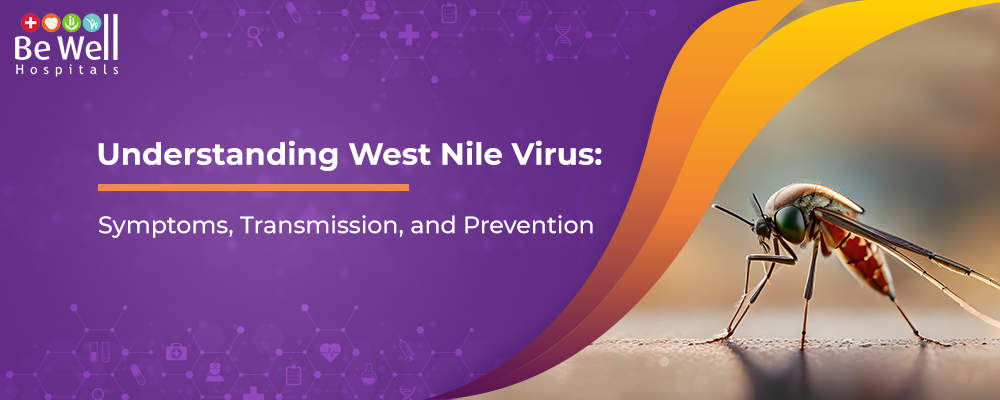Understanding West Nile Virus: Symptoms, Transmission, and Prevention

Introduction
In recent years, the West Nile Virus has garnered attention as a significant public health concern, sparking discussions on its origins, spread, and impact. This mosquito-borne virus, first identified in Uganda in 1937, has since spread globally, causing outbreaks in various regions. Understanding how the virus is transmitted to humans through mosquito bites is crucial in navigating its implications and implementing preventive measures effectively. As we delve into the nuances of West Nile Virus transmission and symptoms, it becomes evident that awareness and proactive measures are paramount, particularly during peak mosquito season. In this blog, we explore the intricacies of this virus and arm ourselves with the knowledge needed to protect against its potential threats to public health.
Symptoms of West Nile Virus
West Nile Virus infection can manifest in a variety of symptoms, ranging from mild to severe.
Vigilance, particularly during peak mosquito seasons, remains key in preventing and promptly addressing any symptoms associated with this virus.
Transmission of West Nile Virus
The transmission cycle of West Nile Virus revolves around a complex interaction between mosquitoes and birds, with humans occasionally caught in the crossfire. Mosquitoes become infected with the virus by feeding on infected birds, serving as carriers of the pathogen. When these infected mosquitoes subsequently bite humans, they transmit the virus, leading to potential infection.
Stagnant water sources and mosquito breeding grounds play a pivotal role in facilitating the spread of the virus, providing ideal breeding grounds for mosquitoes to thrive and multiply. Understanding this transmission cycle is crucial in implementing preventive measures and mitigating the risk of West Nile Virus infection, particularly during times of peak mosquito activity.
By addressing factors such as stagnant water and implementing mosquito control strategies, we can take proactive steps to reduce the transmission of this potentially harmful virus and protect public health.
Prevention Strategies
To minimize the risk of West Nile Virus infection through mosquito bites, consider the following preventive measures:
By implementing these simple yet effective strategies, individuals can significantly reduce their exposure to mosquitoes and lower their risk of West Nile Virus infection.
Protection for High-Risk Groups
Individuals at higher risk of severe West Nile Virus complications, such as older adults and those with weakened immune systems, require special considerations to safeguard their health.
By prioritizing preventive measures and proactive healthcare-seeking behaviors, high-risk individuals can minimize their risk of West Nile Virus complications and protect their overall well-being.
Public Health Measures
Public health efforts play a crucial role in monitoring and controlling the transmission of West Nile Virus.
By employing these comprehensive public health measures, authorities can effectively mitigate the spread of West Nile Virus and protect communities from the associated risks.
Conclusion
It’s essential to remain vigilant and informed about West Nile Virus to safeguard our health during mosquito season. By recalling key points about its symptoms, transmission, and prevention strategies, we empower ourselves to take proactive measures against infection. Let's prioritize our well-being by using insect repellents, wearing protective clothing, and eliminating standing water around our homes. With proper knowledge and preventive actions, we can significantly reduce our risk of exposure to West Nile Virus.
At Be Well Hospitals, we're committed to providing comprehensive care and support. If you experience any symptoms of West Nile Virus or require medical assistance, don't hesitate to reach out to us. Visit our Emergency Care webpage or call us at 9698 300 300. Stay informed, stay safe, and let's navigate mosquito season with confidence and resilience.
